January 2023



On the Road Again: Featuring Greg Weaver’s Home Audio System
The New Apartment Lounge’s Maurice Jeffries visits the Audio Analyst at home for the third time.
Report By Maurice Jeffries
What would we do without the much beloved road trip? The promise of exploring parts known, and better yet completely unknown, especially in the wake of the Covid Pandemic, strikes many like as perfect balm to months of virus-driven isolation. So, when my dear friend and fellow audio miscreant, Greg Weaver (known to many of you as the audio analyst, famous for his scrupulously detailed show reports and recent highly informative and entertaining foray into the fractious world of YouTube audio reporting), teased with the promise to hear a tantalizing array of new gear, to tussle with a new puppy (a 100 lbs. Great Dane named Stella), and most importantly, to reconnect face-to-face, I leapt into action.
Since Greg lives in Northern Indiana and I call Central Florida home (and have a day job to boot, unlike the recently retired Mr. Weaver), my latest road trip involved a flight from Orlando to connection central Chicago and thence to South Bend. No two days of driving for yours truly! Over a long Fall weekend (which gifted stunning fall weather), I got to hear just how much better Greg’s system sounds over its previous iteration.
The differences were not subtle.
Prior to this outing, my last visit to Goshen, Indiana, Greg’s hometown, took place in late January 2019 over the MLK holiday weekend. Readers who have followed my two previous visits will recall that earlier iterations of Dr. Weaver’s system included the stellar Audionet’s Max mono block amps and matching preamp (still his permanent references), Valve Amplification Company’s (VAC) Statement 450i iQ integrated amplifier, the superb Kronos Sparta turntable with Helena arm, Etsuro Urushi Gold cartridge, a loom of Stealth Audio cables, and the stunning Von Schweikert Audio ULTRA 9 loudspeakers (plus a gaggle of carefully selected accessories). Essentially scaled-down versions of the company’s vaunted ULTRA 11 flagships, the 9s tip the scales at a back-breaking 600 pounds per side and cost a retirement-bursting $250,000 the pair.
In a musically compelling upmarket move, the remarkable Kronos Pro turntable and new Discovery RS tonearm combo (but same cartridge) headlines the latest system, these tonier stalwarts replacing the humbler (but still outstanding) Sparta/Helena pairing. For this latest trip, I also had the good fortune to hear VAC’s reference Statement Line and Statement Phono Stage packages (each $80,000 two-box affairs boasting separate power supplies) plus the truly over-the-topStatement 452 iQ Musicbloc all-tubed mono amps ($75K each), also a VAC design. A loom of top-level MasterBuilt Audio interconnects and power cables (but Stealth Audio phono cables), a new Lampizator BALTIC 3 tubed DAC, and a gorgeous hand-built audio rack from Timbernation rounded out a system still built around the magnificent ULTRA 9 towers.
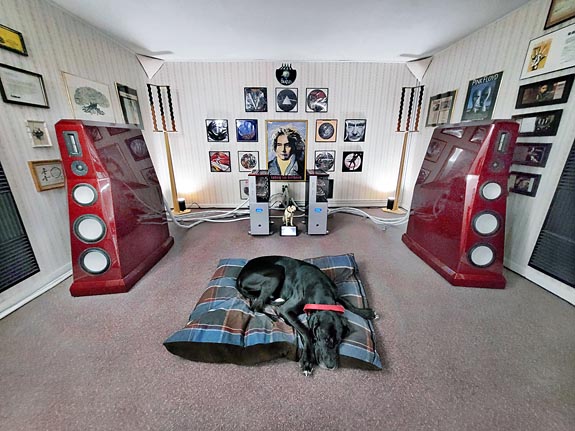
For a detailed summary of all the wonderful gear in Greg’s system, I suggest a visit to his audio analyst webpage. The webpage provides an up-to-date listing of all the main gear and accessories in his system and some great listening room and system photos to boot. At the end of this report, you can find a detailed price breakdown for every component in Greg’s magnificent system.

The Sorcerer’s Apprentice
The first thing one notices about the audio analyst’s main system (a dedicated home theatre system occupies the back fifth or so of Greg’s 13 x 46 listening space), apart from the almost cartoonish dimensions of the ULTRA 9 towers, is the obsessive attention to set-up details and protocols that he follows. Cables never, ever cross one another. Speaker cables appear to float on Audionet Gauss Cable Elevators, better to minimize the frequency suppressing, phase disrupting, detail robbing distortions that arise when the cable materials interact undesirably with materials of varying magnetic permeability like air (highly permeable) and ground (highly impermeable). The higher the permeability number, the easier an electrical signal can pass through that material unperturbed. The Elevators effectively limit speaker cable interaction to the ambient air alone. Low-frequency damping panels and room tuning accessories are spaced discreetly around the room to maximum sonic effect.
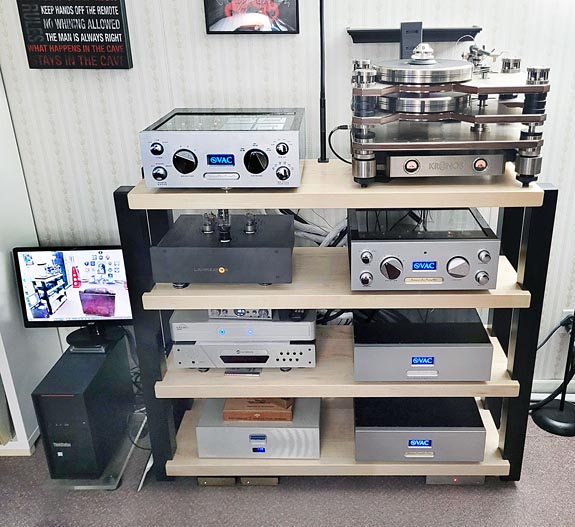
And just like my VSA Endeavor SEs, Greg’s ULTRA 9s fire into the room with minimal toe-in, an arrangement that maximizes tweeter dispersion, improves inter-driver phase coherence, and noticeably enhances soundstage scaling and image focus. In the same vein, one look at the Kronos table/arm setup suggests a similar obsessive-compulsive attention to detail. Clusters of Critical Mass Systems component footers sonically decouple source electronics form the resonant-induced vibrational ravages of the listening room environment.
Like I said, Dr. Weaver leaves no sonic weirding stones uncovered in his singular alchemical quest for sonic perfection.
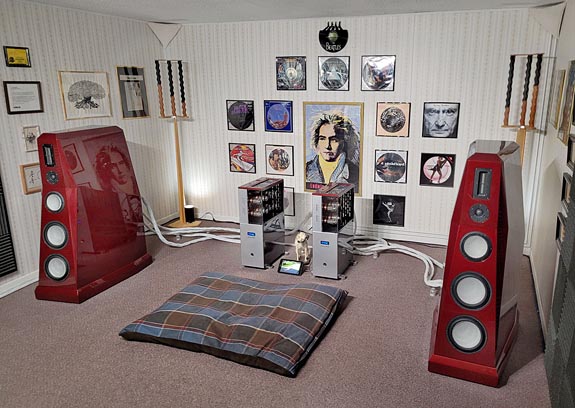
Why go through the hassle of tweaking a nearly million-dollar system (I know I know, we’re talking silly do-re-mi here) to such extremes, with the corresponding manpower inputs to pull all this off measured not in minutes or hours, but days and weeks? A routine spin of any well-recorded LP will answer that question in a manner of minutes. Simply stated, each tweak that the audio analyst employs, both minor and major, elevates the system’s overall performance envelope to levels that few in our tribe ever obtain, let alone get the chance to hear.
So, on Acoustic Sounds’ stellar reissue of trumpeter and music auteur Miles Davis’s modern classic Kind of Blue (Acoustic Sounds/UHQR 0004-45), Greg’s system highlights not only the superior bass precision, top end extension, imaging focus, and transparency of this latest UHQR masterwork, but also the ever-so-slightly superior tonality of the earlier and still outstanding Classic reissue from 1995.
Detail-wise, the Kronos /VAC fronted system unearths the tonal footprints of individual recordings with such utter and convincing naturalness and precision that hearing your favorite tracks may very well leave you breathless and slack-jawed at just how real and lifelike they sound. Equally impressive, this preternaturally revealing combination renders the sonic differences between alternate versions of the same recordings as truthfully and unambiguously as any system in my experience. Supertramp’s Dreamer, from the 1974 art rock classic Crime of the Century (the British band’s big commercial breakthrough), features lovely vocal harmonization throughout, with lead vocalist Roger Hodgson’s crystal-clear falsetto commanding center stage.

On the 2014 U.K. A&M Records 40th Anniversary Edition Back to Black version of Crime of the Century [0600753547441], this a beautifully packaged, remastered 180-gram gatefold LP reissue, Hodgson’s disarmingly boyish falsetto soars sweetly and with remarkable purity. Unfortunately, the sonic illusion cast by the A&M Records 40th Anniversary Back to Black edition collapses entirely when compared to the far superior 1981 U.S. Mobile Fidelity Sound Lab UHQR [MFQR 1-005] reissue release, a 200-gram LP. This gorgeously remastered, limited edition boxed set (numbered #4222 of 5000) highlights the shortcomings of the A&M Records reissue in overall transparency, soundstage layering, tonal expressiveness, and sheer frequency extension.
After listening to the Mobile Fidelity Sound Lab UHQR release, I turned to Greg and commented that Hodgson’s voice sounded totally different now. The UHQR release added at least an octave in lower end foundational content to his voice, and far more convincing tonality.
In short, MoFi’s UHQR release sounded so clearly superior in all meaningful ways to the now merely serviceable A&M Records 40th Anniversary Back to Black version, one could be forgiven for thinking after a side-by-side comparison that they had just listened to two different recordings of the same song, not two different remastered versions of the same album.

The Music Between The Half Notes
This remarkable resolving power derives no doubt from the superb musical qualities of each system component, meaning the beautifully designed and constructed (and affordable) Timbernation racks and Critical Mass footers, the state-of-the-art LP replay front end, the tomb-like quietude of the multi-layered speaker cabinets, the striking holography and transparency of the amps, not to mention the seemingly preternatural synergy that each component shares with every other in the system.
To my ears, the system (particularly when powered by the Statement level VAC electronics) excels in sound-staging breadth and scale, imaging focus, low end performance that delivers cavernous extension, marmoreal impact, and the precision of a laser guided missile tracking system, along with an almost (but not quite) ruthless transparency to sources and upstream electronics. Add to these qualities a difficult to define but also unforgettable ability to project instruments and voices into the listening with all-but unparalleled power and presence and you have the makings of a system that facilitates the suspension of disbelief in the electro-acoustic origins of the music not just for a few seconds or stray moments, but for repeated moments and even hours at a time.
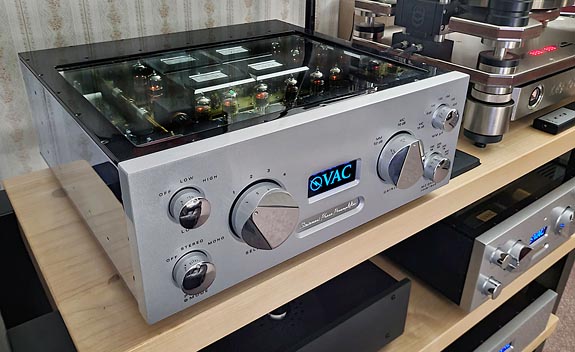
Let’s start with sound-staging and imaging. As one would expect given the Herculean proportions of the speakers and partnering amplification (tubes, baby, tubes), the system scales with a seemingly room-obliterating dimensionality that originates well behind the rear listening room wall and projects well beyond the front plane of the speakers. Imagine a system that images and stages with the focus, precision, and transparency of a great mini monitor, but that simultaneously projects and scales with sufficient weight to approach the power and impact of a top-flight symphony blasting at full-tilt and you have an idea of what GW’s system can deliver.
It seems axiomatic that a speaker that weighs more than 500 lbs. and which boasts the ability to generate spectacularly clean bass (down to around 16 Hz) should literally shake the rafters when asked to do so. The VSA ULTRA 9 does this with relative ease (and with an absence of audible distortion that puts most transducers to shame). More impressively, certainly for a small-space listener like me who values bass quality over sheer bass quantity, these $250,000-the-pair behemoths amalgamate the speed, dynamic weight, and impact of a great full-range horn with the transient precision, tautness, and tonal focus of a great sealed-box design. On recordings with genuine deep bass content, the sonic rewards are utterly sublime. Kudos here go to the decision to mate a traditional sealed-box architecture to the 9’s powered 15-inch sub.
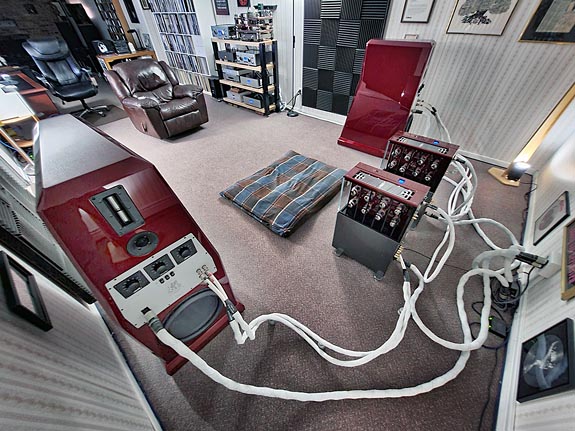
Above and beyond its impressive quantitative abilities, the 9s (and the system overall) do what only a few truly great speakers can: project instruments and voices into the listening with such disarming naturalness, speed, transparency, and urgency, as to suggest the real thing.
Did You Hear That?
I should note that when it comes to what we hear in qualitative terms, Greg and I are of a single mind 95% of the time. Indeed, I marvel every time I describe to him the sound of a component that we have both heard, only to have him echo (down to the micro level) a nearly identical set of sonic impressions. Any points of sonic discord (a rarity) typically boil down to our different listening preferences, not to wholesale disagreements about what we have or haven’t heard objectively.
By the same token, Greg and I differ greatly over the kinds of music we use to evaluate systems and components, or for sheer enjoyment. Dr. Weaver inhabits a musical universe where the likes of Carlos Satana, David Bowie, Supertramp, Alan Parsons, and Papa Ludwig hold court. I live in the post-bob jazz multiverse, with a healthy dose of Arnold Schoenberg, Alban Berg, Bill Evans, and Charlie Mingus thrown in for good measure.
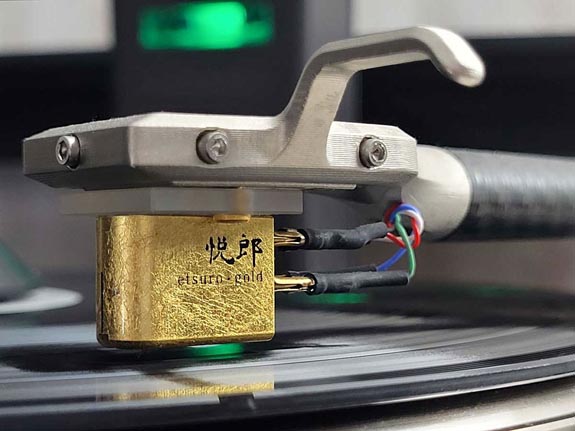
I mention these points to highlight the fact that time and again, Greg and I were in unison about what we heard over the weekend in sound quality terms, while freely admitting (and accepting) any aesthetic differences between us. More importantly, the side-by-side comparisons discussed above reveal that the very best audio systems (and Greg’s system clearly ranks amongst the very best that I have heard) can render fine sonic details not merely as audio spectacle, but as genuine “added musical value” propositions. The better recorded Miles and Supertramp discs did not (and do not) just sound better; they also allowed me to connect with the music and the performers in a more immersive and emotionally engaging way.
Undeniably, the addition of the remarkable Kronos Pro turntable and Discovery RS tonearm to Greg’s system delivered the same overall “obliterated room boundaries” listening sessions that I enjoyed at GTT Audio & Video when I head the then new Kronos Discovery turntable and now discontinued Kronoscope tonearm (here) (the original Kronoscope has been replaced by the new Kronoscope RS tonearm that I soon hope to have in my system). Not to mention the relatively short-lived but equally transformative addition of the stellar VAC Statement Line and Statement Phono Stages andgorgeous Statement 452 iQ Musicbloc all-tubed mono amps (units that Greg sadly had to return not long after my departure).
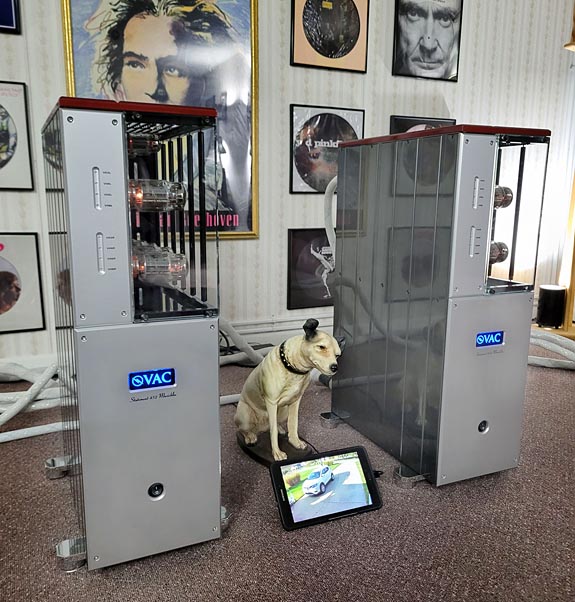
Parting Is Such Sweet Sorrow
So! Where does nearly a million bucks worth of glass, aluminum, copper, experimental alloys, rubber belts, mineral-loaded speaker cabinets, ceramic drivers and all the rest leave music lovers who, on average, spend a “mere” $18,000 to $20,000 on their admittedly still very good systems overall? In the same place hearing the audio analyst’s system leaves me: wishing I had the space, do-re-mi, and patience to put together a system as compelling as his, but, but, grateful for my far humbler and still musically engaging smaller system.
When all is said and done, hearing a truly great reference system like Greg’s should be seen as an educational exercise. As I expressed recently to an online “Doubting Thomas” who essentially deemed Greg and me crazy for waxing enthusiastic over the musical benefits of the Kronos Pro/Discovery RS / Etsuro Gold system, regardless of one’s personal like (or dislike) of digital or vinyl, open-minded listeners owe it to themselves to seek out a friend or dealer who can demonstrate competently a truly reference-caliber setup.
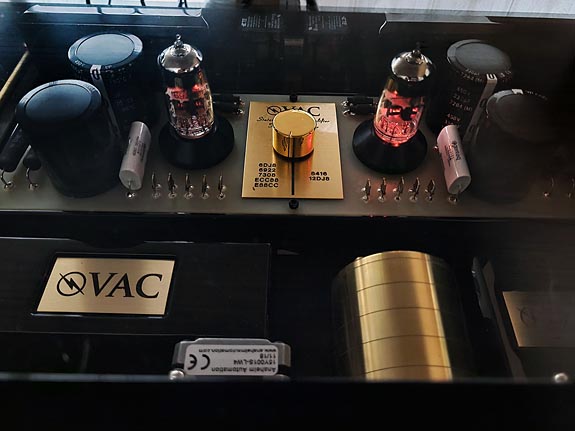
Doing so will recalibrate your understanding of what a top-flight system can do sonically, and what value it can deliver musically. You will find yourself in a far better position to decide what musical and sonic values move you, and which components at your chosen price point best approximate the performance of the corresponding benchmark gear.
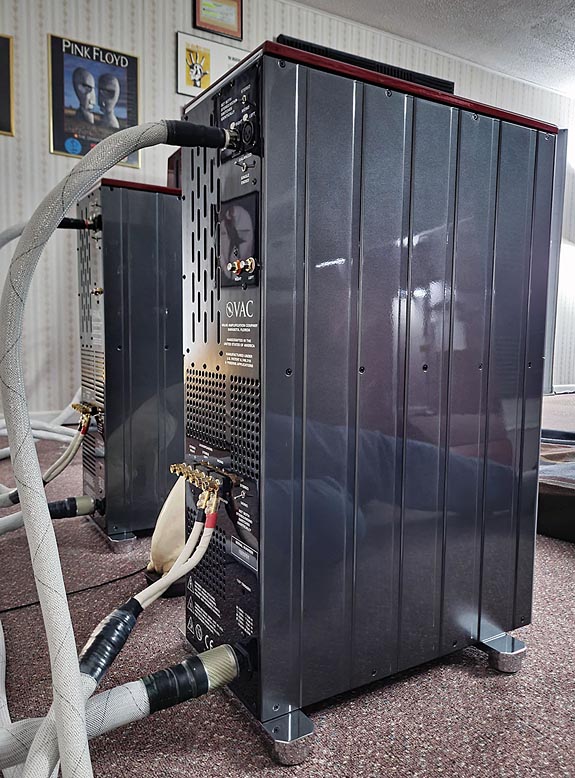
So, what are you waiting for? Get off your fat audiophile asses, get vaccinated (or boosted), and go hear music with other human beings. You won’t be sorry!
Excelsior!!!!!
Greg Weaver’s Home Audio System
Analog Front End
KRONOS Pro Limited-Edition Turntable – $51,000
KRONOS Super Capacitor Power Supply 1 – $15,000
KRONOS Discovery Resonance Suppression Tonearm – $24,000
Etsuro Gold Moving Coil Cartridge – $20,999
STEALTH phono cable – $9,000
Valve Amplification Company Electronics Statement Phono Stage – $80,000
Valve Amplification Company Electronics Statement Line Stage – $80,000
A pair of Statement 452iQ Musicbloc mono amplifiers – $150,000/pr.
Music Servers
Ideon Absolute Stream – $20,000
Lenovo ThinkStation P320 CAD Workstation – $1,200
Intel Xeon 3.50GHz quad core CPU running 8 Logical Processors, with 32 GB RAM, and I use a Samsung EVO Plus solid-state drive for the OS
Streaming Software – Roon v2.0; J River Media Center 29; Fidelizer Pro v8.8
Networking
NAS and all Network Devices/Streamers/Roon Endpoints connected with
Audience Hidden Treasure CAT7 Ethernet and Serial ATA cables
DACs
LampizatOr Baltic 3 (rolled with Shuguang 12au7-Treasure Series outputs and VERY RARE 1953 Soviet Military NOS MELZ 6H8C Metalbase inputs) – $7,000
iFi iDSD Pro with Linear Power Supply – $3,000
Power Conditioning
Audience adeptResponse 12-T4 – $11,400 (with frontRow powerChord – $6,700)
Quantum Symphony Pro AC Conditioners – $1,200
Other Cables
1.5M STEALTH Śakra v16 Balanced IC – $24,000
1.5M STEALTH Śakra v17 limited edition Balanced cable run – $36,000
Misc Audience frontRow powerChords and frontRow ICs
Master-Built ULTRA Cables
2M balanced interconnect – from Statement Phono stage to Line Stage ~ $22,000
9M balanced interconnect – from Statement Line to Statement 542 iQ Music Bloc ~ $50,000
2.5M biwire speaker cables – one bi-wire cable from each Statement 542 iQ Musicbloc to each Ultra 9 ~ $35,000
Audionet GAUSS Cable Risers (6 units) ~$2,000
1.5M AC Power cords – Statement Line Stage/Statement Phono Stage ~ $17,000 ea. ($34,000 total)
2M AC Power cords – Statement 542 iQ Musicbloc ~ $21,000 ea. ($42,000 total)
2.5M AC Power cords – Ultra 9 ~ $23,000 ea. ($46,000 total)
Master-Built Cable total = $229,000
Support
TimberNation – 2-inch-thick maple, four shelf, double wide equipment stand.









Leave a Reply
Want to join discussion?
Feel free to contribute!